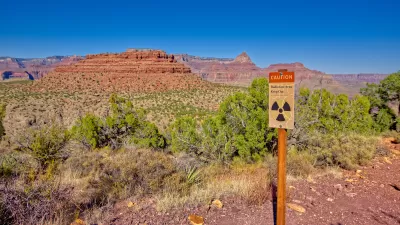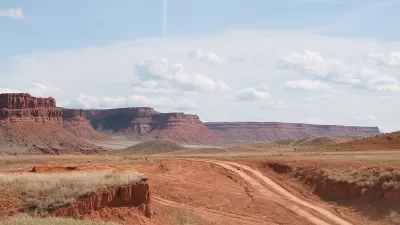The Department of the Interior is alleged to have generated electric energy by limiting water flow to the Grand Canyon, at the expense of the landmarks' ecology--despite having access to scientific findings that warned against doing so.
"The behind-the-scenes skirmish, which took place just days before President George W. Bush left the White House, highlights the sort of challenges Interior Secretary Ken Salazar will face in his new position. While Salazar declined to comment specifically on the Grand Canyon case because it is the subject of an ongoing legal battle, he said in an interview yesterday that he would emphasize 'the need to have sound science in all decision making in the Department of Interior.'
'Science should not be shoved under the table in order to deal with special interests that are knocking at the door,' said Salazar, adding that he will be looking at several last-minute decisions made by Bush before he left office. 'My point of view is, nothing is sacrosanct in terms of being reexamined.'
The federal government has spent about $100 million studying water flows on the Colorado River, and the studies indicate that the ecosystem would benefit from occasional short bursts of massive amounts of water along with more regular flows during the day and night. This pattern would mimic the river's natural fluctuations and deposit sediment on canyon beaches while also sustaining fish populations."
FULL STORY: Interior Ignored Science When Limiting Water to Grand Canyon

Alabama: Trump Terminates Settlements for Black Communities Harmed By Raw Sewage
Trump deemed the landmark civil rights agreement “illegal DEI and environmental justice policy.”

Planetizen Federal Action Tracker
A weekly monitor of how Trump’s orders and actions are impacting planners and planning in America.

The 120 Year Old Tiny Home Villages That Sheltered San Francisco’s Earthquake Refugees
More than a century ago, San Francisco mobilized to house thousands of residents displaced by the 1906 earthquake. Could their strategy offer a model for the present?

In Both Crashes and Crime, Public Transportation is Far Safer than Driving
Contrary to popular assumptions, public transportation has far lower crash and crime rates than automobile travel. For safer communities, improve and encourage transit travel.

Report: Zoning Reforms Should Complement Nashville’s Ambitious Transit Plan
Without reform, restrictive zoning codes will limit the impact of the city’s planned transit expansion and could exclude some of the residents who depend on transit the most.

Judge Orders Release of Frozen IRA, IIJA Funding
The decision is a victory for environmental groups who charged that freezing funds for critical infrastructure and disaster response programs caused “real and irreparable harm” to communities.
Urban Design for Planners 1: Software Tools
This six-course series explores essential urban design concepts using open source software and equips planners with the tools they need to participate fully in the urban design process.
Planning for Universal Design
Learn the tools for implementing Universal Design in planning regulations.
Clanton & Associates, Inc.
Jessamine County Fiscal Court
Institute for Housing and Urban Development Studies (IHS)
City of Grandview
Harvard GSD Executive Education
Toledo-Lucas County Plan Commissions
Salt Lake City
NYU Wagner Graduate School of Public Service





























